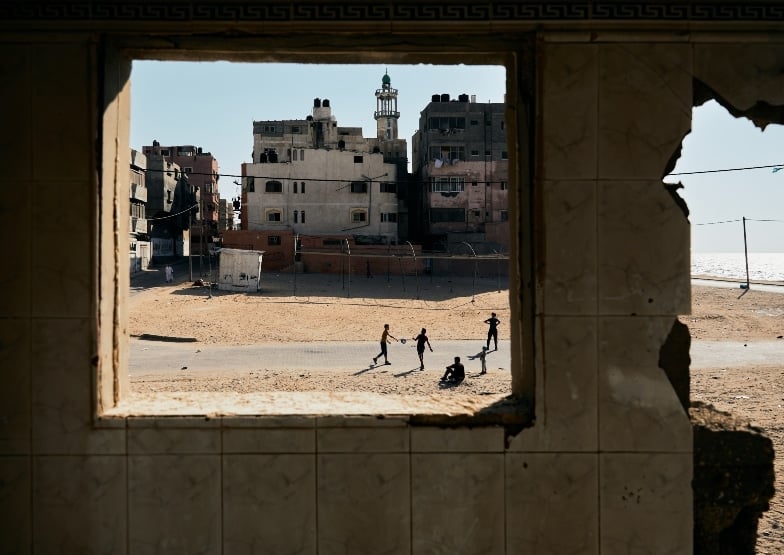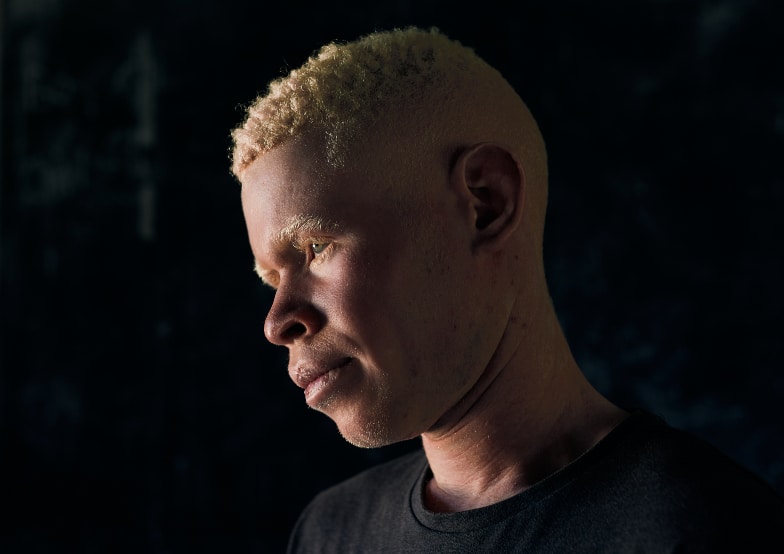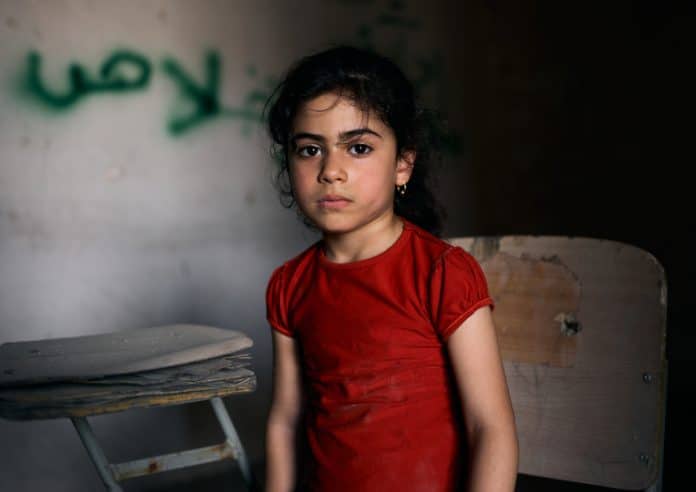British photographer Paddy Dowling has travelled to some of the world’s most challenging contexts for his work. His latest exhibition, ‘From Despair to Hope: Children Beyond Armed Conflict’, on display in Brussels’ Bozar gallery until 28 April, depicts the lives of children from conflict zones such as the Democratic Republic of the Congo, Gaza, and Sudan.
Organised in collaboration with the UN Office for Children and Armed Conflict, the exhibition shines a light on the complexities of the lives of children amid conflict, including their aspirations for a peaceful future.
Children are the most vulnerable in times of war
Over 400 million children, about one child in every five, live in or are fleeing from conflict zones around the world, according to UNICEF. Children are not permitted to simply be children. Many are killed, maimed, made victims of sexual violence, and recruited as child soldiers in conflicts they have no voice in. Their schools and hospitals are under attack, and they are deprived of access to humanitarian assistance.
Coverage in war zones can often focus on destruction and death, Paddy notes, but through his exhibition he wanted to showcase his subjects with dignity and emphasise a “third narrative of peace.”
“It is very easy to show someone in pain, or agony, or crying.” Instead, he tries to look for “subtle nuances, and muscle movements in a face.”
His photographs showcase children in a wide variety of settings – in the ruins of their classrooms, on the seafront in Gaza, in refugee camps. Some of the children look away from the camera, others gaze straight into the lens.
“You will find their most natural pose for them,” Paddy details. In several of the pictures, light pierces through scenes of darkness, which he says highlights how beauty and misery can coexist in conflict situations.
“No matter how dark and difficult the circumstances, people can be beautiful, humanity is always beautiful, despite the evil that exists in the world,” Paddy says.
Worsening conflicts across the globe

Several of the places featured in the exhibition are either still in conflict or the conflict situation has worsened since Paddy travelled there, such as Sudan and Gaza.
Philippe Lazzarini, Commissioner-General of the UN’s Palestinian Refugee Agency (UNRWA) has described the war in Gaza as a “war on children”, with Gaza health authority data indicating that at least 12,300 children have died in the enclave since the outbreak of the conflict.
“Every single day, I think about those hundreds of people I have interviewed and photographed in Gaza,” recounts Paddy. He has visited four times, all prior to the Israeli military operation which followed the 7 October attacks by Hamas. Paddy recalls the generosity and kindness of the people he met in Gaza, being welcomed into homes with coffee, tea and Middle Eastern sweets.
In Sudan, where the war has now entered its second year, the UN Committee on the Rights of the Child has warned of a staggering toll of the crisis on children, with 14 million requiring urgent humanitarian assistance, 19 million deprived of education and four million displaced from their homes.
“If I were going back to those places and I had seen improvements, I had seen less killing, less misery, less displacement, I would feel more hopeful. But actually, most places I go back to are even worse and worse and worse. And so, it is very difficult to see the hope,” Paddy says.
Haunting and inspiring tales

The testimonies of all the children interviewed by Paddy over the years are carried with him wherever he goes, but some stories in particular stand out.
Moses from South Sudan was 15 when he witnessed saw his dad being murdered by a militia. He was then abducted by the same militia and trained in warfare and theft.
Interviewed aged 18 in Uganda, Paddy describes the interview as “ghastly, because the silence before he spoke just consumed the entire space.”
“[Moses] just said: ‘I’ve killed so many people’. And to hear those words, I do not think I have ever heard anything quite so levelling […] You could see the remorse,” Paddy recounts.
Moses’ community and relatives shunned him. He had never been in a classroom. “He was craving that sense of normality, of being in a school, the simplest things […] Heartbreaking, just heartbreaking.”

Charles, aged 16, was forced to leave the Democratic Republic of the Congo where he was persecuted for being a person with albinism, as witchdoctors believe their body parts bring good luck or wealth to the end user. His father was beaten for refusing to sell him.
After moving to Uganda, Charles faced a similar stigma, and his long walks to school were interrupted by strangers attempting to lure him away. His determination to achieve an education, as Charles hopes to secure a job where he can help protect the rights of other persons with albinism, encouraged him to continue to make the journey.
“Despite that constant, daily threat and fear, he still had so much drive and bravery to walk to school,” Paddy says.
The power of dreaming
Whether it is being a football player, a teacher, or a doctor, or just returning home, several of the children in Paddy’s photographs express their wishes for the future.
“It is the dreams that keep them alive,” Paddy shares.
After covering humanitarian crises from over 60 countries across the world, he has regularly collaborated with the UN through his work. Whilst it can be difficult to see the light amid such darkness, Paddy says hope comes from those working in the humanitarian sector.
“The UN have been fundamental and instrumental in my career. They are always the guiding light and the standard by which you should conduct yourself and be measured,” he underlines. In particular, he pays tribute to the UN office for Children and Armed Conflict and its Special Representative Virginia Gamba. Its mandate is to give a voice to children, to bring attention to their plight in conflicts, and above all to protect them.
Paddy calls on countries to keep funding the initiative and to help children who have suffered in conflict.
Reflecting on the photos of the children in his exhibition, he urges: “Do not look away from the images. Look at them and do not flinch. Because they are counting on you to do something.”
From Despair to Hope: Children Beyond Armed Conflict
The exhibition by Paddy Dowling can be viewed at Bozar museum until 28th April.
In the framework of the Belgian Presidency of the Council of the European Union, it was organised by the Federal Public Service Foreign Affairs, Foreign Trade and Development Cooperation of the Kingdom of Belgium, the Office of the United Nations Special Representative of the Secretary-General for Children and Armed Conflict and the European Commission.
More details can be found here.
*The pictures and their descriptions in the article date prior to 2023.

